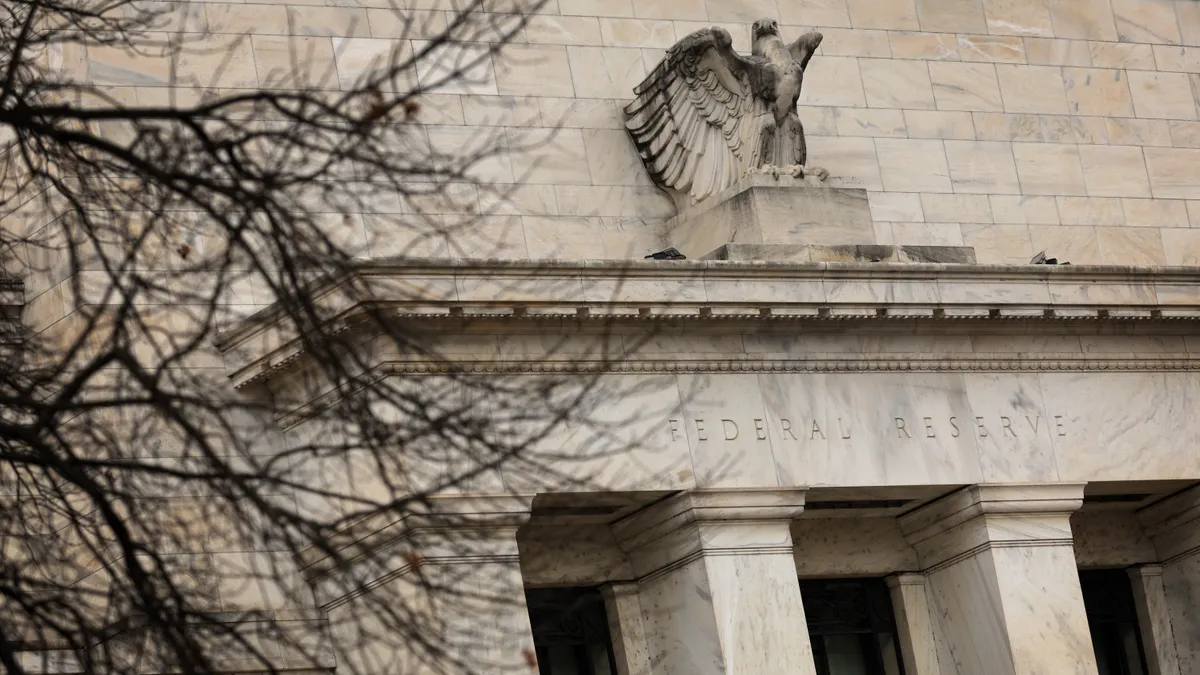Dive Brief:
- Federal Reserve Vice Chair Philip Jefferson said Monday that a recent surge in the yields of long-term Treasurys may slow the economy and prompt him to adjust his approach to monetary policy.
- Recently, “real long-term Treasury yields have risen significantly,” Jefferson said in a speech to the National Association for Business Economics. “I will remain cognizant of the tightening in financial conditions through higher bond yields and will keep that in mind as I assess the future path of policy.”
- Jefferson said inflation remains too high while affirming the Fed’s decision last month to leave the main interest rate unchanged as it tries to navigate the risk of tightening too little or too much. “The balancing of these two risks was a good reason for holding the policy rate” at a range between 5.25% and 5.5%, he said.
Dive Insight:
The yield on the 10-year Treasury note — the benchmark for corporate bonds, auto loans, mortgages and other financing — rose to about 4.8% on Friday, a percentage point higher than at the start of July. The bond market was closed on Monday in observance of Columbus Day.
The yields on long-term Treasurys may have risen in recent weeks as investors upgrade their expectations for economic growth or alter their view of underlying risks, Jefferson said, noting that the full impact from the most aggressive monetary tightening in four decades will take time to flow through the economy.
“As a policymaker, I have to be mindful when I'm trying to think about the restrictive stance of policy that the cumulative effect of past interest rate increases has not yet been fully felt,” Jefferson said in response to a question after his speech. “That's part of the deliberation and calibration that I have to think about when thinking about the future path of policy.”
Dallas Fed President Lorie Logan on Monday also flagged the recent increase in long-term bond yields.
“Financial conditions have tightened notably in recent months,” Logan said in a speech to the NABE, while noting that “the reasons for the tightening matter.
“If long-term interest rates remain elevated because of higher term premiums, there may be less need to raise the fed funds rate,” she said. “However, to the extent that strength in the economy is behind the increase in long-term interest rates, the FOMC [Federal Open Market Committee] may need to do more.”
Either way, the Fed will probably need to maintain its current restrictive stance for the foreseeable future, Logan said.
The central bank will likely increase the federal funds rate to 5.6% by December before trimming it to 5.1% by the end of next year, a half point higher than a 4.6% estimate in June, according to median projections by Fed officials released on Sept. 20.
“Inflation remains too high, the labor market is still very strong and output, spending and job growth are beating expectations,” Logan said. “I anticipate that we will need continued restrictive financial conditions to return inflation to 2 percent in a timely way and sustainably achieve our goals of maximum employment and price stability.”
Rising bond yields have reinforced the central bank’s fight against inflation, San Francisco Fed President Mary Daly said Thursday.
With yields increasing about 0.4 percentage points since the Sept. 19-20 Fed meeting, “the need to do tightening additionally is not there,” Daly said. “If financial conditions are sufficiently tight, our work is not necessary, because we don't need to boost them more.”
The yield on the 10-year Treasury will probably fall to 4.1% by the end of this year and 3.8% by the end of 2024, according to a panel of 40 economists surveyed by NABE.
Three out of five economists put the odds of a recession during the next 12 months at less than 50%, NABE said Monday.
Economists’ median forecast for gross domestic product growth this year rose to 2.1%, nearly double the forecast in a May survey, NABE said, while noting a reduction in expectations for 2024 growth to 1.1% from 1.7% in May.















